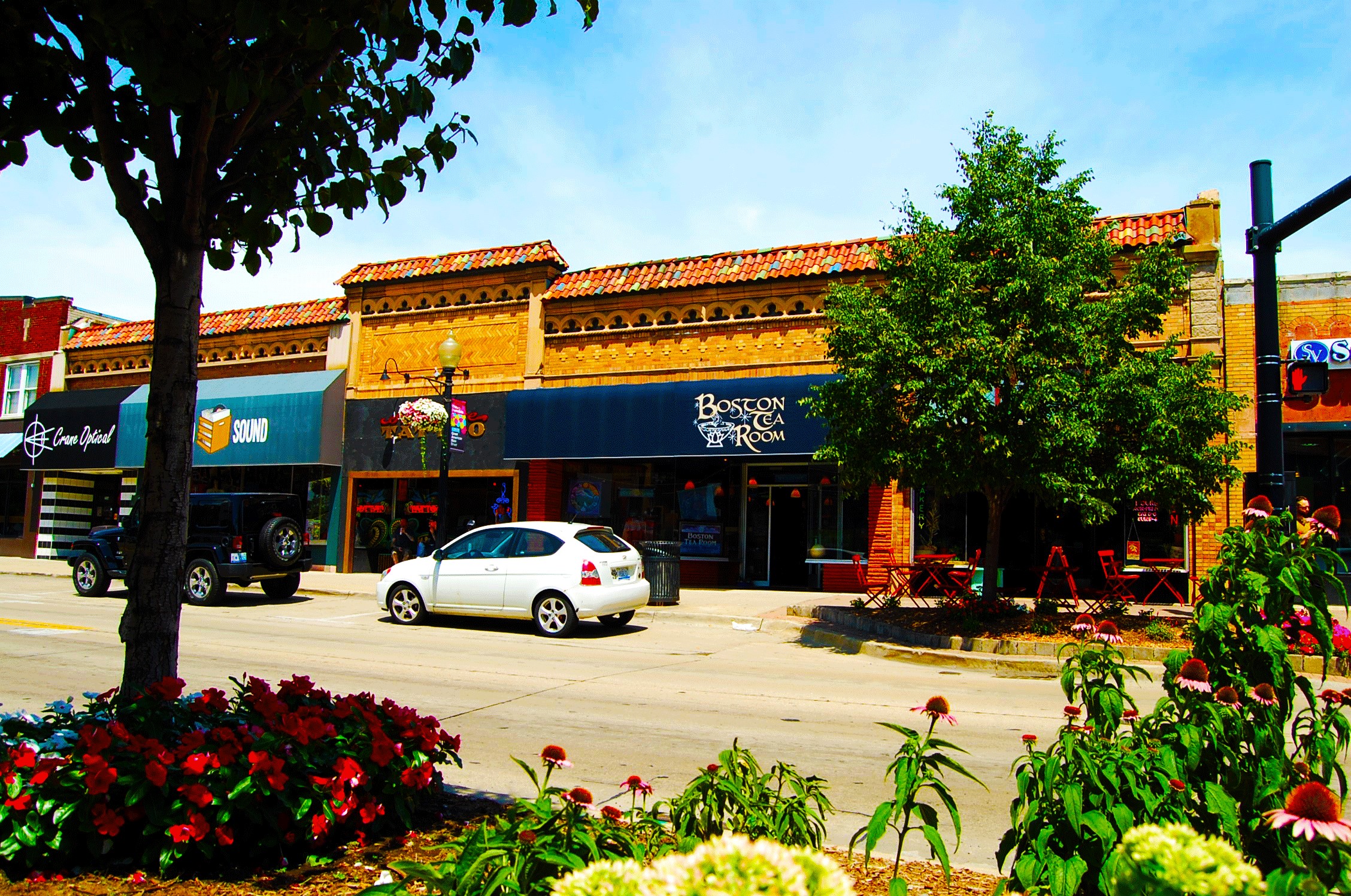
“The best time to plant a tree was 20 years ago. The second-best time is now.” This Chinese proverb about the benefits of planning can be applied to many facets of life, and the same philosophy should be extended to our downtown streetscapes. Trees are one of the most important aspects of all public spaces, including urban areas, and should be one of the fundamental building blocks considered when planning downtown spaces.
To Plant or Not to Plant?
Incorporating elements of nature with faster-paced downtown streets often impacts pedestrians’ perception of the area. Spaces filled with trees and greenery have been found to reduce stress and anxiety, while encouraging a more active and positive population. Thoughtful planting in urban spaces exhibits a community who cares about the well-being of its residents, visitors and business owners.
Nature also impacts the perception and behavior of those driving on the street. Similar to the effect that narrower travel lanes have on speed, spaces thoughtfully designed with trees and other plantings cause drivers to focus more on the task at hand, usually at slower speeds.
The benefits of planting trees therefore extend well beyond aesthetics; studies have shown many of these additional benefits, including:
- Safety: Cities have documented a 5 to 20 percent decrease in vehicle crashes and a 12 percent decrease in crime following the installation of trees and planters along urban roadsides.
- Climate: Asphalt and concrete streets and parking lots increase temperatures by 3-7 degrees in downtowns. Tree canopies provide necessary shade to mitigate the heat. Additional benefits include improved air quality over time and protection from rain.
- Property Value: The U.S. Forest Service estimates that trees can increase property values from 5–20%. A study in Portland found that walkability to nearby businesses raises a home’s value by about $3,500 in a treeless neighborhood and by more than $22,000 in a tree-lined one.
- Consumer Spending: Aesthetics point to trends in consumers’ spending habits. A shopper’s perception of a business begins well before they step foot in a store. Retail research reveals that on average, consumers are willing to travel farther, stay longer and pay 9 to 12 percent more for merchandise and parking in forested central business districts.
Best Practices
So you’re ready to plant. Now what?
1. Tree Types
The countless benefits of tree-lined streets stem from making the appropriate selection upfront. When deciding on the perfect plant for your downtown space, considerations such as shape, urban tolerance, and location within the urban fabric must be top of mind.
When selecting greenery for downtown spaces, not all trees are created equally. Certain varieties of trees are more tolerant than others and should be chosen based on the characteristics of the location. For example, urban environments may result in restricted root systems, decreased sunlight from multi-story buildings, oversaturation, road salt, and excess debris. Another important consideration is the interaction of tree canopy with adjacent business signage. This is particularly important for planning retail corridors, where the streetscape is meant to support local businesses.
2. Tree Placement
The placement of all selected trees and plants requires the same level of thoughtful planning as their variety selection. The two visuals below demonstrate design options for different sized walkways. (Source: sfbetterstreets.org)
3. Planting Prep
Size matters! Planting trees along downtown streets requires thoughtful planning to accommodate the surrounding urban environment. While every space is different, a conversation with your planning consultant should address:
- Tree grates or beds? – Grates, or slotted coverings, should be used where high levels of pedestrian activity is expected, such as areas near entrances to highly trafficked buildings. If space allows, tree beds with colorful plants around the base of the trees helps to keep the soil and tree roots cool in the hotter months, prevents soil compaction, and are a great reminder to water.
- Silva Cells or curb extension? – An underground support system using units called Silva Cells can be used to suspend pavement and grating over soil, protecting and containing tree roots while lessening soil compaction and aiding in stormwater management. Alternatively, existing curbs can be expanded outwardly to accommodate trees, grass and other plants, providing stormwater management in addition to their aesthetic qualities.
- Evaluation of existing soil composition – Soils can vary considerably, especially those that have been altered by human intervention, and can impact a plant’s ability to survive. Soil in urban areas, for example, can be affected by things like grading and construction activity which contribute to changes in physical and/or chemical aspects of the soil. Careful examination will help determine what varieties of tree and other plant species are most to survive and flourish.
- Managing irrigation – To ensure tree health is preserved, effective irrigation delivery options should be assessed prior to installation, especially in areas of low anticipated annual rainfall, or if site physical restraints limit the ability to use rainfall.
- Addressing drainage and air flow to roots – Soil should contain about 50 percent solid materials and about 50 percent pore space, filled by air and water. If drainage is not sufficient, pore space becomes filled with water for too long, not allowing enough air flow to roots. Related to drainage is soil compaction, as more dense, compacted soil includes around 60 to 80 percent solid materials, leaving much less room for sufficient air contact with roots. Because of this, care should be taken to ensure that non-compacted topsoil is available for trees to thrive and that a proper drainage system is installed to prevent oversaturation.
4. Future Maintenance
The key to keeping a beautiful downtown streetscape is a routine maintenance plan. Tasks like trimming, fertilizing, monitoring, and even decorating for the holidays should be considered up front to ensure the cost of this maintenance is accounted for and scheduled throughout the year. Also, trees do not last forever – a replacement plan should also be broken out as a line item on the budget!
At Your Service – Professional Guidance from Giffels Webster
As seen, a lot of careful considerations go into purchasing and accommodating for trees in street-side locations, from tree types and placement to proper drainage and soil composition. The many benefits of trees will improve any urban area, including increased commerce and property values, as well as climate cooling and improved safety.
If all this tree talk has you feeling green with streetscape envy, we’re here to help! Our landscape architects and urban planners are available to discuss custom solutions for your community’s needs. Contact us today to get started.
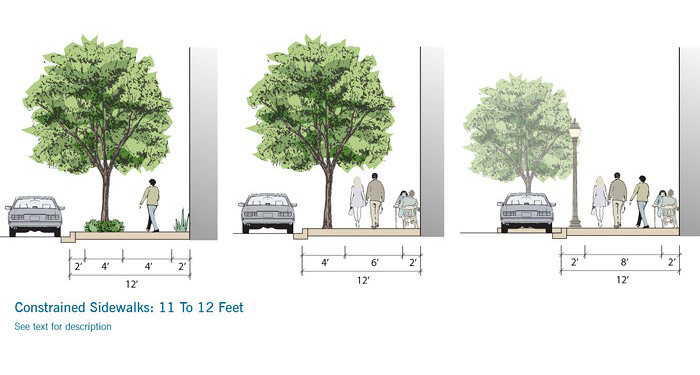
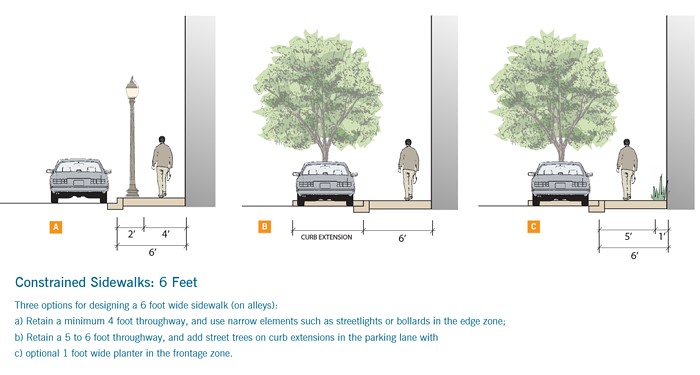
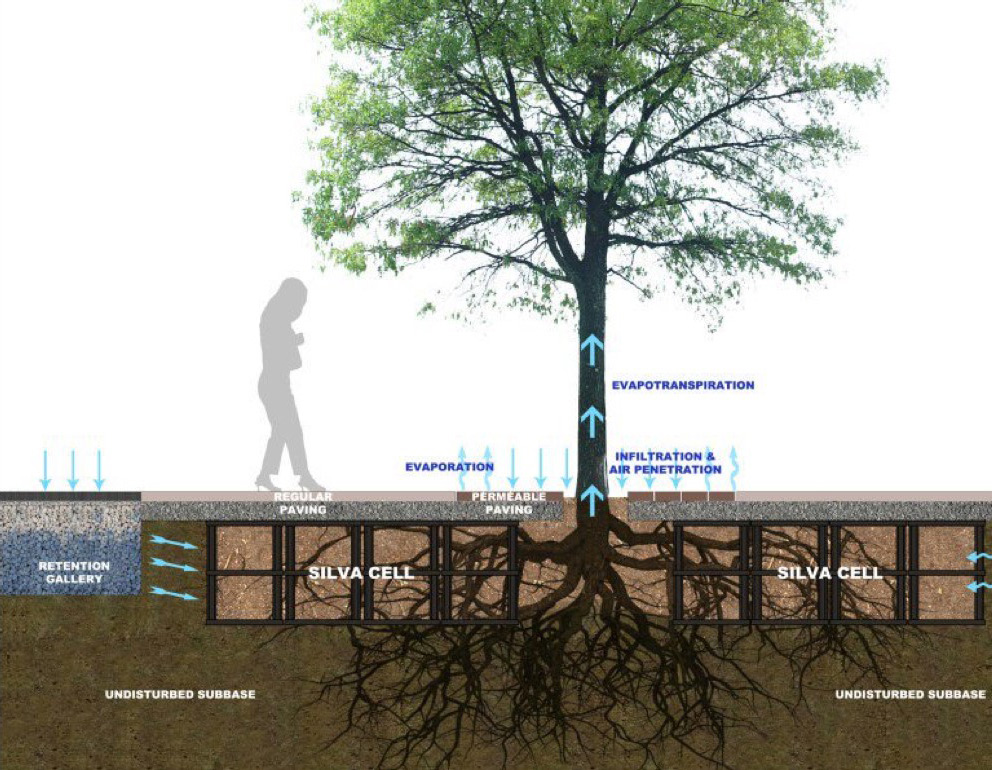 Silva Cell example. Source: Jennifer Keesmaat
Silva Cell example. Source: Jennifer Keesmaat
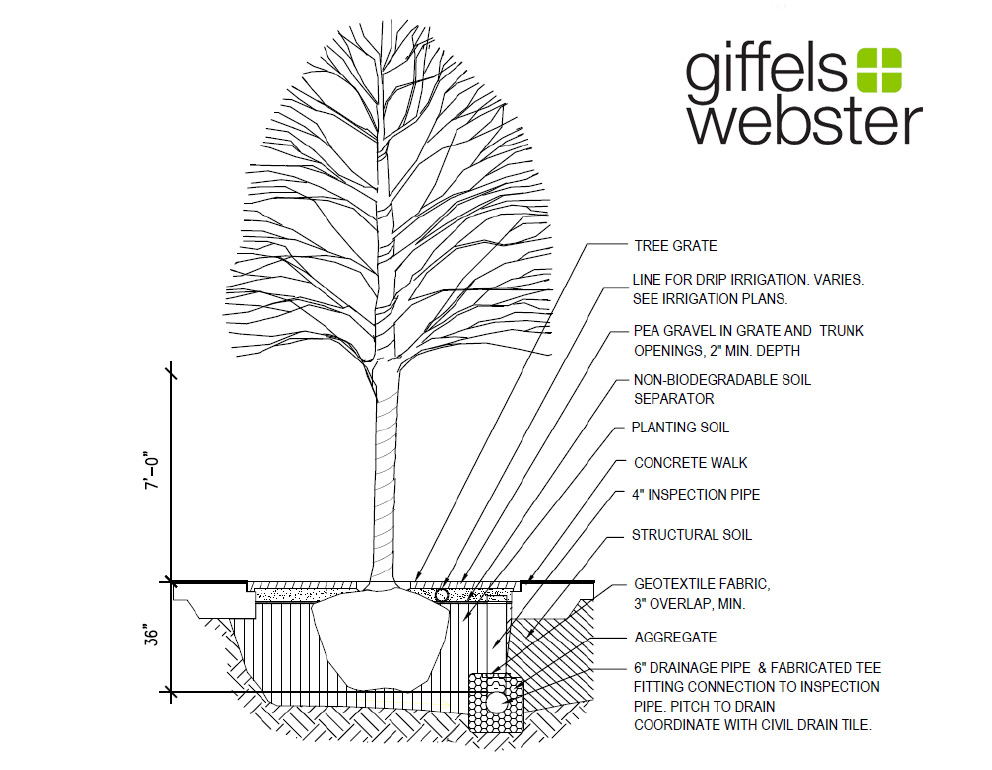 Tree in cast iron grate, detail
Tree in cast iron grate, detail